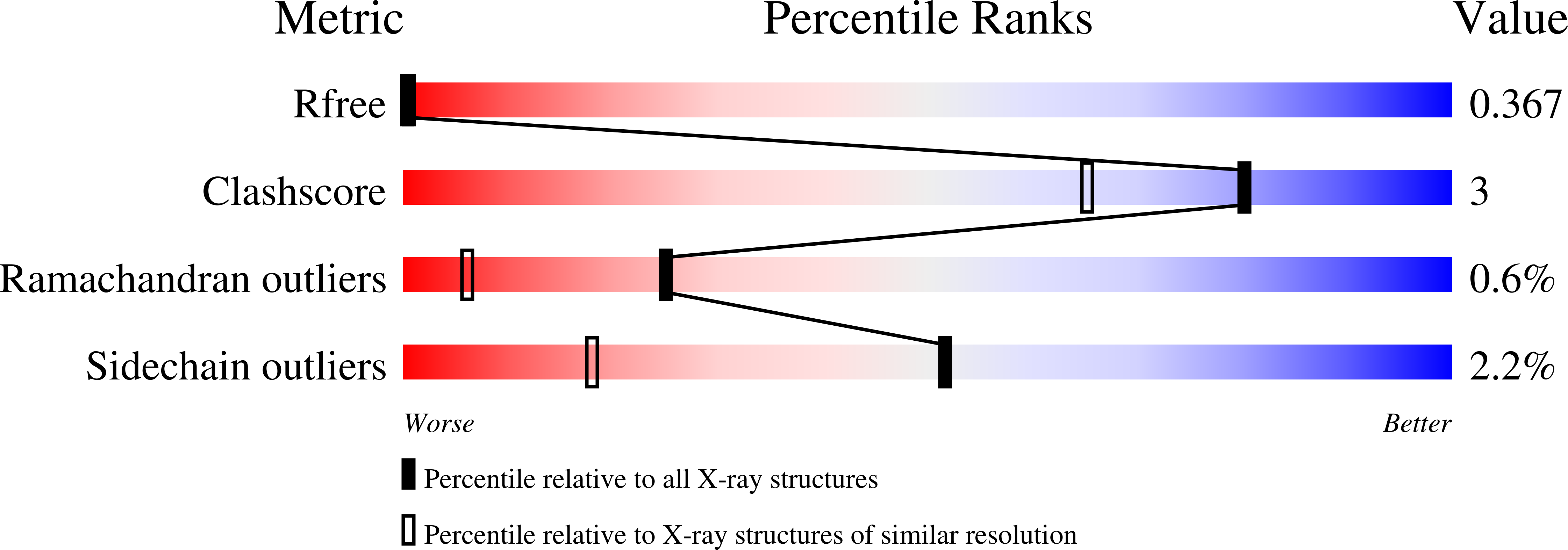Structures of Ubiquitin Insertion Mutants Support Site-specific Reflex Response to Insertions Hypothesis.
Ferraro, D.M., Ferraro, D.J., Ramaswamy, S., Robertson, A.D.(2006) J Mol Biol 359: 390-402
- PubMed: 16647719
- DOI: https://doi.org/10.1016/j.jmb.2006.03.047
- Primary Citation of Related Structures:
2GBJ, 2GBK, 2GBM, 2GBN, 2GBR - PubMed Abstract:
We previously concluded that, judging from NMR chemical shifts, the effects of insertions into ubiquitin on its conformation appear to depend primarily on the site of insertion rather than the sequence of the insertion. To obtain a more complete and atomic-resolution understanding of how these insertions modulate the conformation of ubiquitin, we have solved the crystal structures of four insertional mutants of ubiquitin. Insertions between residues 9 and 10 of ubiquitin are minimally perturbing to the remainder of the protein, while larger alterations occur when the insertion is between residues 35 and 36. Further, the alterations in response to insertions are very similar for each mutant at a given site. Two insertions, one at each site, were designed from structurally homologous proteins. Interestingly, the secondary structure within these five to seven amino acid residue insertions is conserved in the new protein. Overall, the crystal structures support the previous conclusion that the conformational effects of these insertions are determined largely by the site of insertion and only secondarily by the sequence of the insert.
Organizational Affiliation:
Department of Biochemistry, Roy J. and Lucille A. Carver College of Medicine, University of Iowa, Iowa City, IA 52242, USA.














